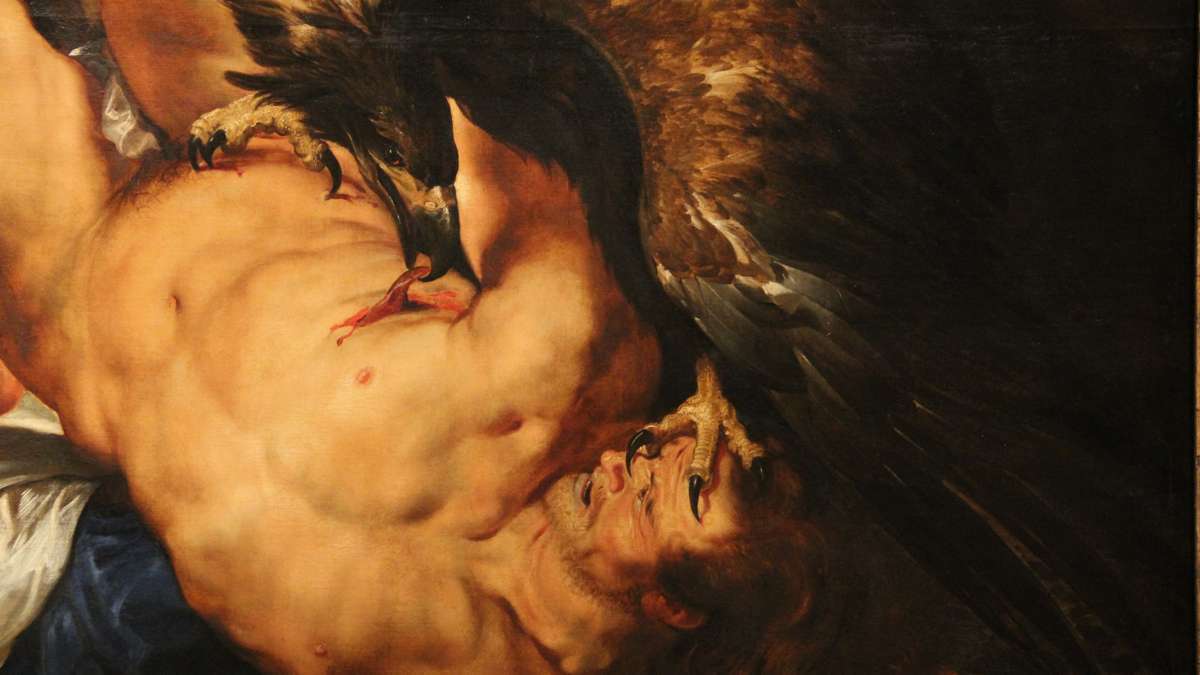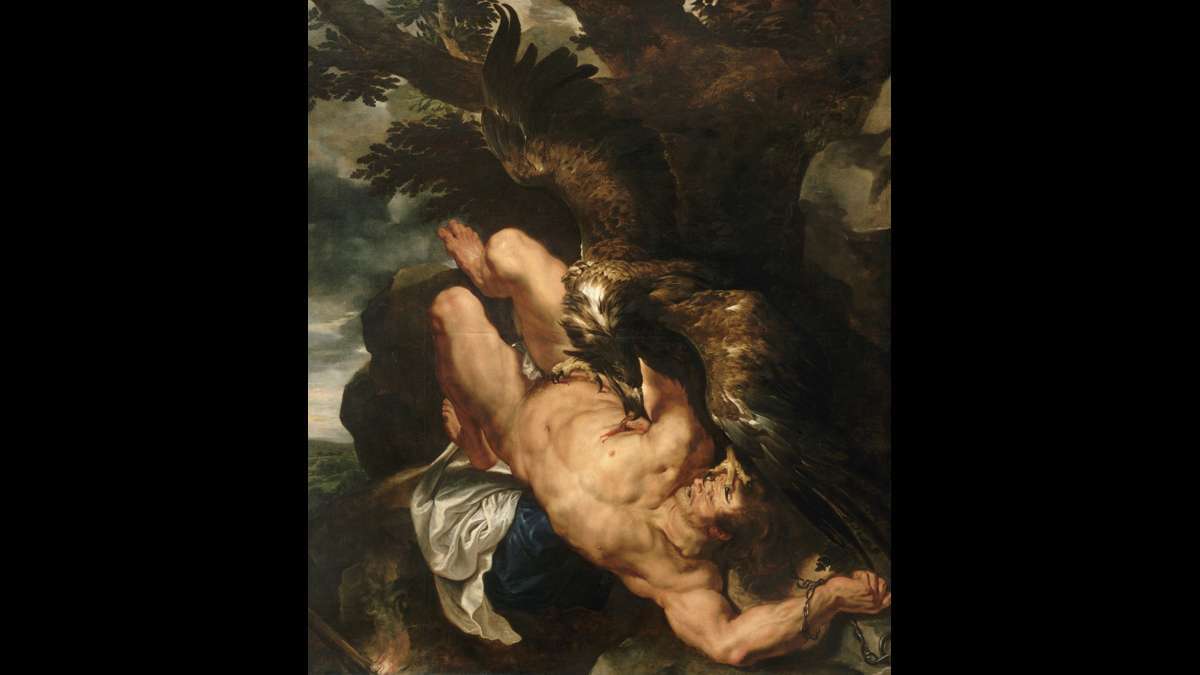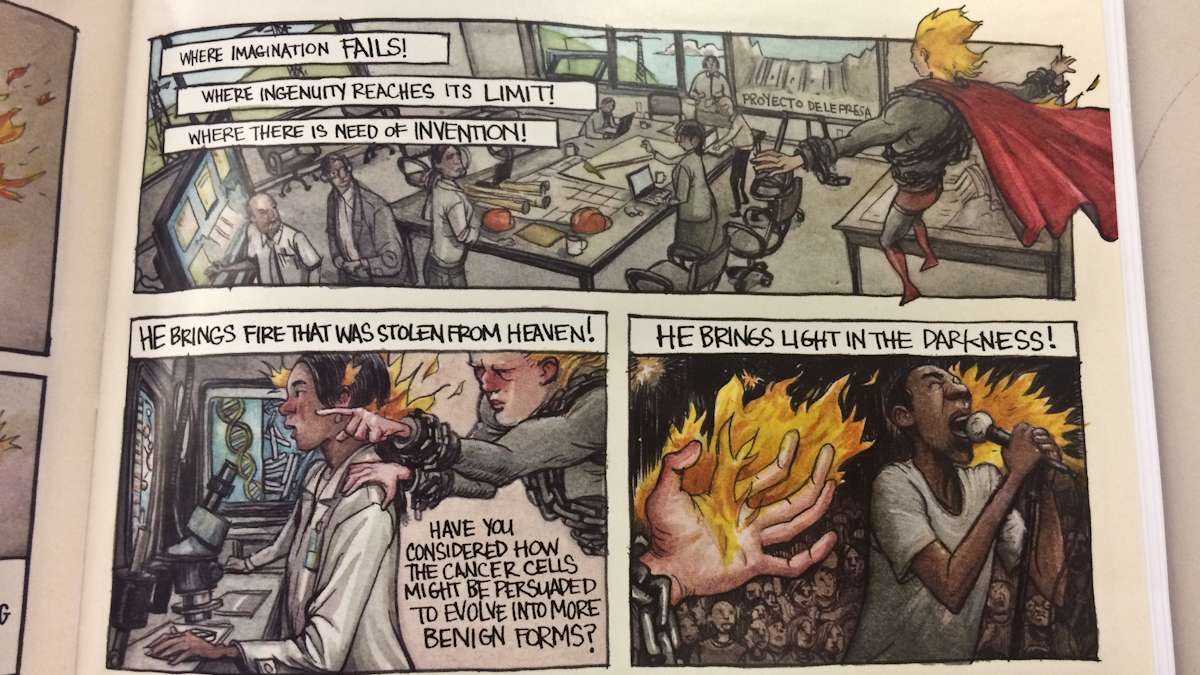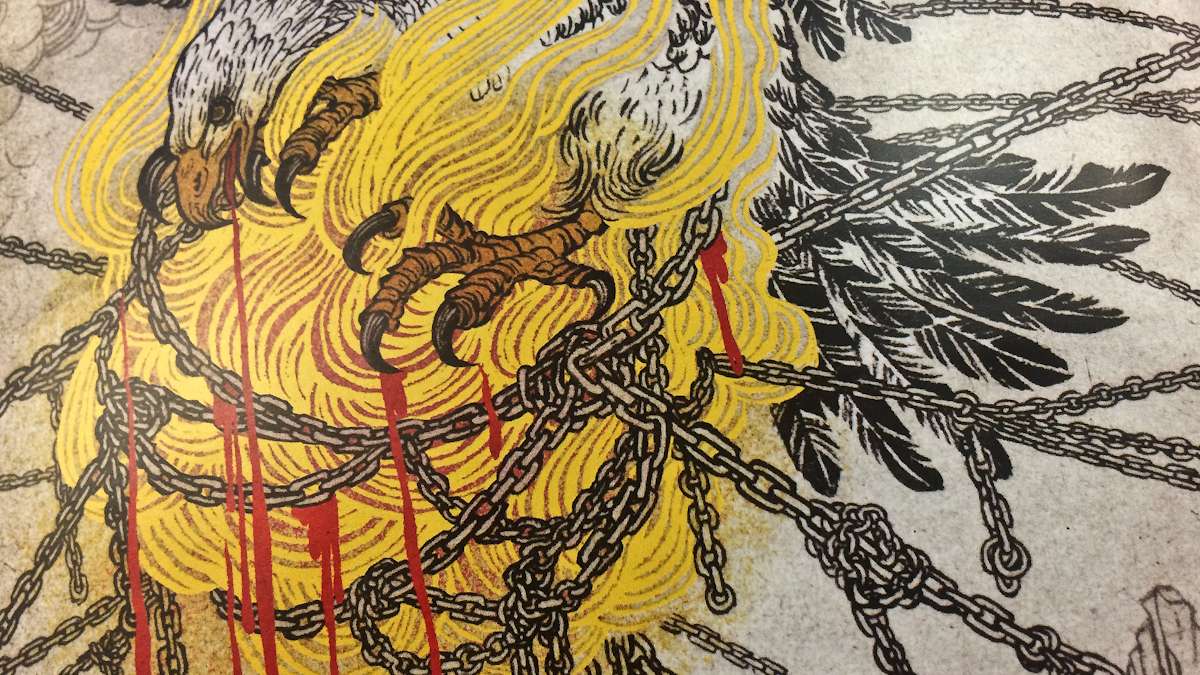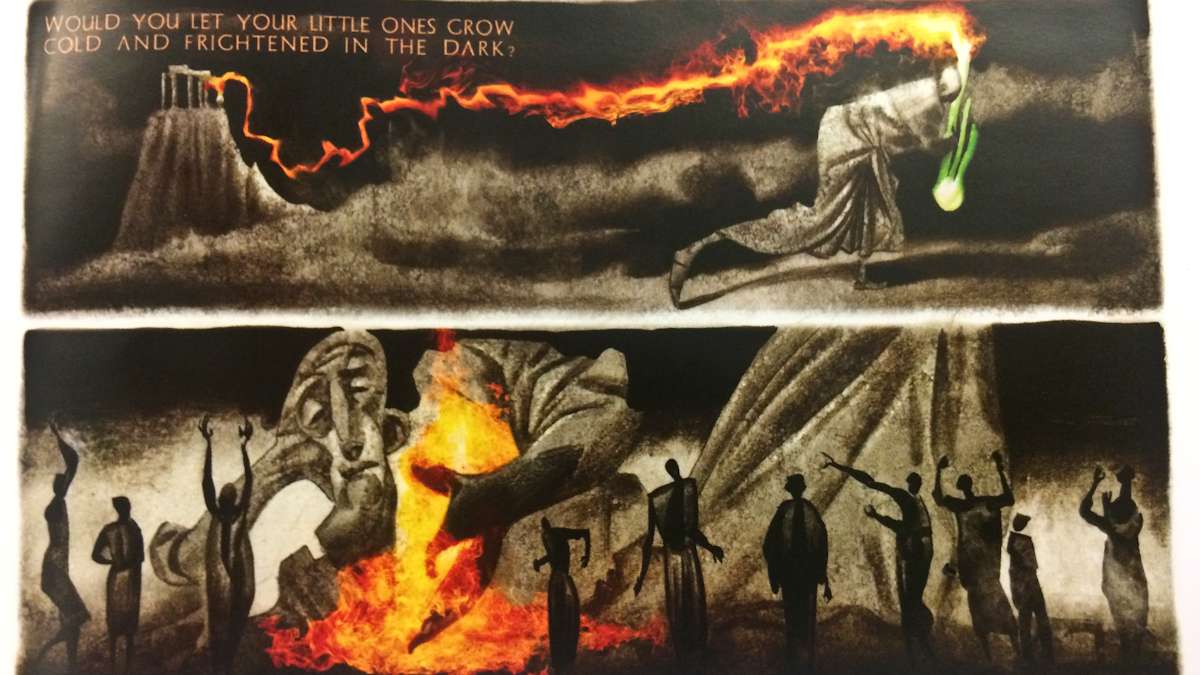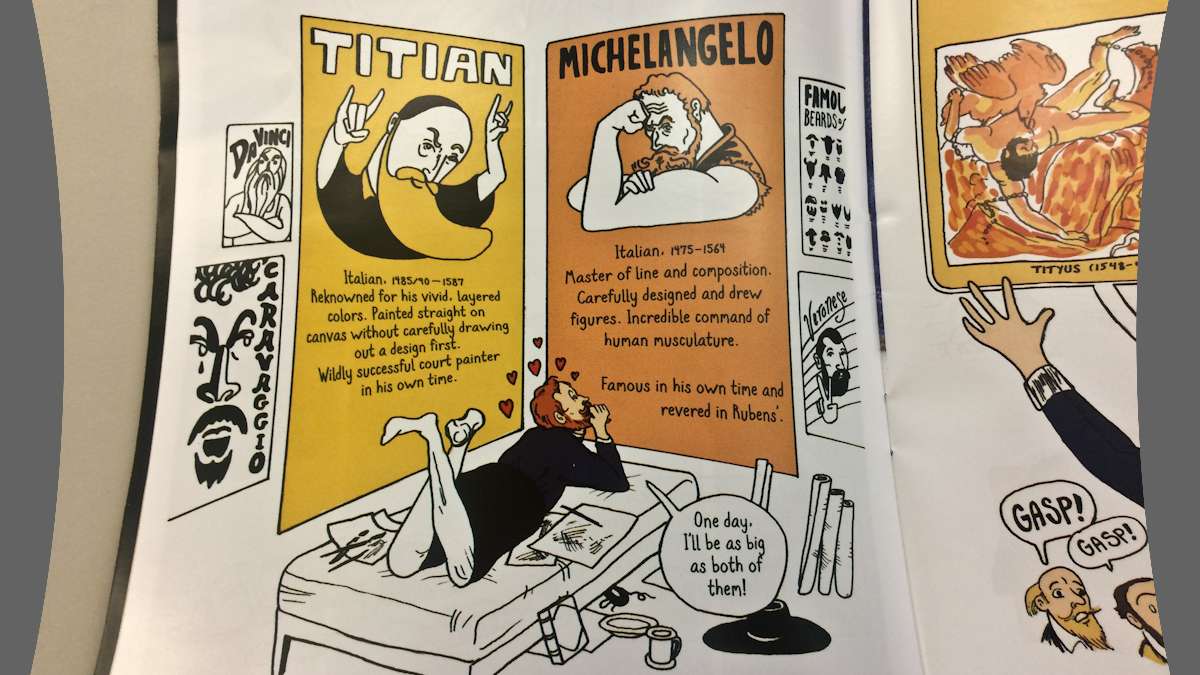‘The Wrath of the Gods’ mixes masters, graphic novels and Greek heroes
ListenThere’s nothing like a good story that mixes mythology and heroes contorted by torture to inspire artistic greats such as Rubens, Michelangelo and Titian.
Seizing on the opportunity to showcase some of the masterpieces in its permanent collection, the Philadelphia Museum of Art designed the exhibition “The Wrath of the Gods,” featuring large works that are as narrative as they are powerful.
If you remember your Greek mythology, Mount Olympus was not exactly a nice place. It was chaotic and contentious. The 12 gods who ruled there fought fiercely for power and territory, and they did not like to be disobeyed. So when the Titan Prometheus stole fire and gave it to mankind, by Zeus he was going to be severely — and eternally — punished.
So Prometheus is portrayed by Rubens as chained high in a mountain within easy reach of an enormous and hungry eagle that continually pecks at his liver.
“But since Prometheus was immortal, his liver regenerated. So his punishment happens day after day after day,” said exhibit curator Christopher Atkins from the museum’s European painting department. “We see the brutality of it: The eagle’s talons are ripping into the flesh, blood is dripping down, the beak snares his liver from the abdomen, one of the talons gouges out his eyes.”
As an act of defiance, the Titan “locks eyes with the eagle, he grits his teeth, he bears the punishment, all for the betterment of mankind,” Atkins said.
And to remind us of his sacrifice, in a corner of the painting, Rubens paints a lit torch. It’s all about the gift of fire.
If all this sounds like the stuff of graphic novels, that’s exactly what inspired the museum curators and the local comic book publisher Locust Moon Press to collaborate. Ten artists and writers were commissioned to interpret the myth. The result is a 25-page full-color book titled “Prometheus Eternal” represented in a variety of styles.
Illustrator Yuko Shimizu reduced the drama to a one-page stylized drawing.
“There are chains around the fire, the most important part of who he is,” she said. “And so without drawing him, we get the symbol, and the eagle is attacking the fireball.”
Throughout the centuries, the story of Prometheus has inspired inventors and artists, said Atkins.
“It depends on which classical source you read,” he said. “Either he gave humanity literally fire, from which we cook food or technology or all sorts of things, or he gave us the creative spark.”
A spark that has become a sort of eternal flame.
In the comic strip by writer Grant Morrison, illustrated by Farel Dalrymple, Prometheus strikes a pose as if to say “Have no fear, Prometheus is here!”
He is pictured “as a super hero complete with cape, flaming gold hair, and his job is to provide inspiration to scientists trying to find a cure for cancer, and to artists, because his super power is inspiring humans to create,” said Atkins.
So there you have it. In his anger, Zeus may have given Prometheus another kind of immortality in the powerful imposing works of Rubens, Michelangelo and Titian.
WHYY is your source for fact-based, in-depth journalism and information. As a nonprofit organization, we rely on financial support from readers like you. Please give today.



